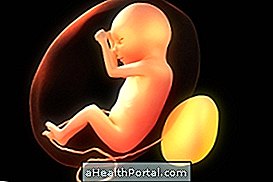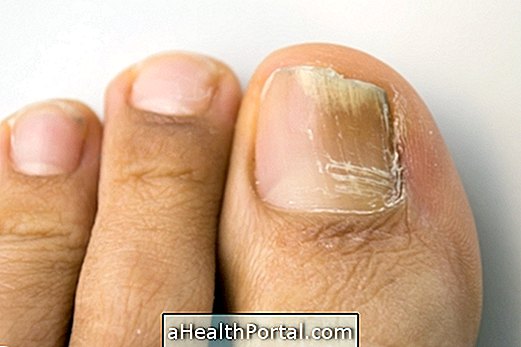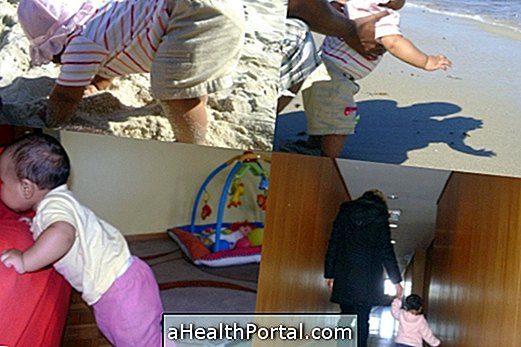Facial skull stenosis, or craniosynostosis as it is also known, is a genetic disorder that causes the bones that make up the head to close before the expected time, causing some changes in the head and face of the baby.
It may or may not be related to any syndrome and there is no intellectual impairment of the child. However, it must undergo some surgeries during the life to avoid that the brain is compressed within a small space, compromising other functions of the organism.

Characteristics of facial cranial stenosis
The characteristics of the baby with facial cranial stenosis are:
- eyes slightly apart from each other;
- orbits shallower than normal, which causes the eyes to appear to be bounced out;
- decreased space between nose and mouth;
- head may be longer than normal or in a triangle shape depending on the suture you have closed early.
There are several causes for facial cranial stenosis. It may or may not be related to a genetic disease or syndrome, such as in Crouson Syndrome or Apert syndrome, or it may be caused by taking medications during pregnancy, such as Phenobartital, a medicine used against epilepsy.
Studies show that mothers who smoke or live in high altitude places are more likely to have a baby with facial cranial stenosis due to decreased oxygen passing to the baby during pregnancy.
Surgery for facial skull stenosis
The treatment for facial cranial stenosis involves performing a surgery to remove the bony sutures that make up the bones of the head and thus allow a good brain development. Depending on the severity of the case, 1, 2 or 3 surgeries may be performed until the end of adolescence. After the surgeries the aesthetic result is satisfactory.
The use of an appliance in the teeth is part of the treatment to avoid misalignment between them, to avoid compromising the mastication muscles, the temporomandibular joint and to help close the bones that form the roof of the mouth.






















